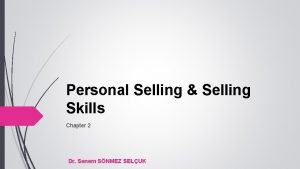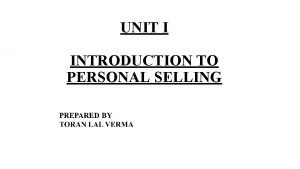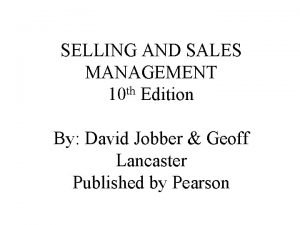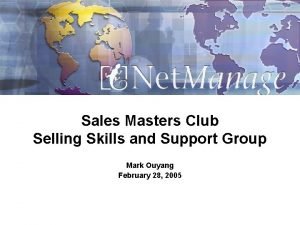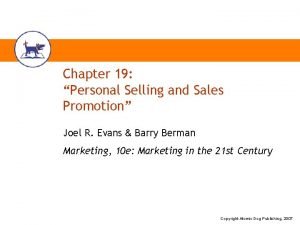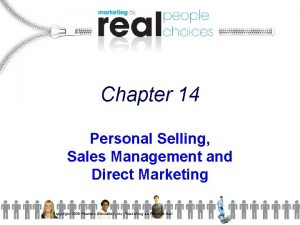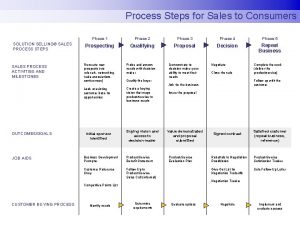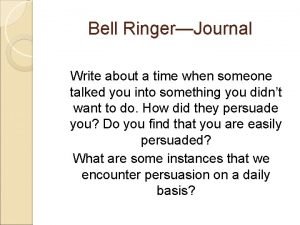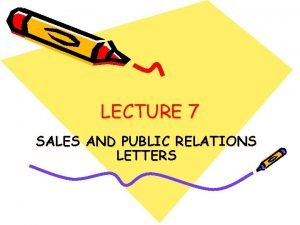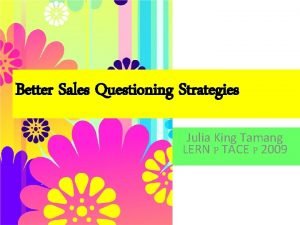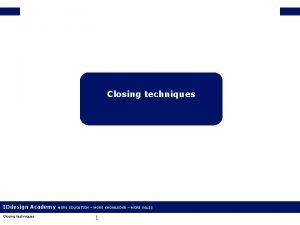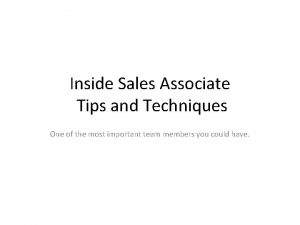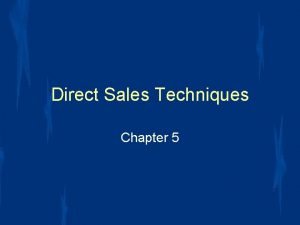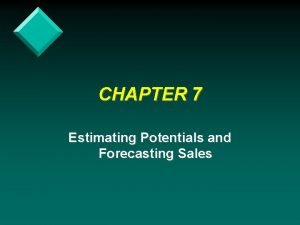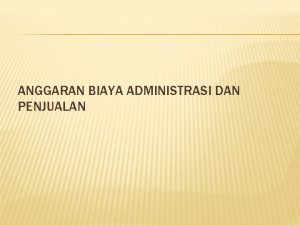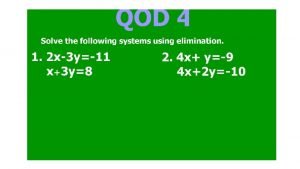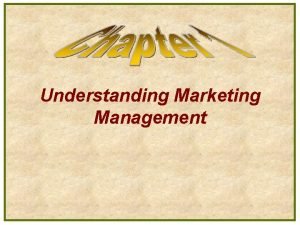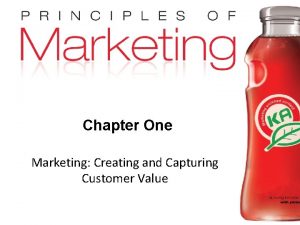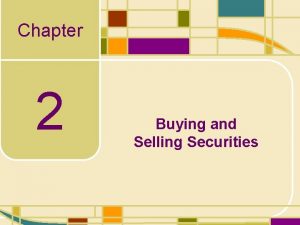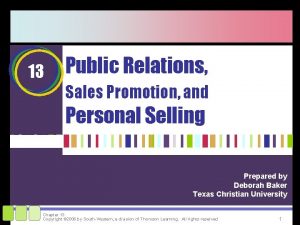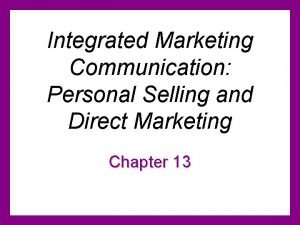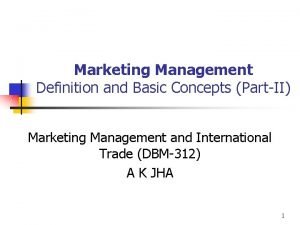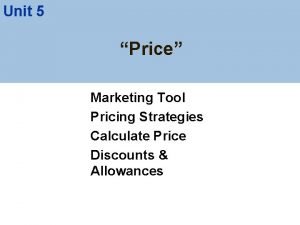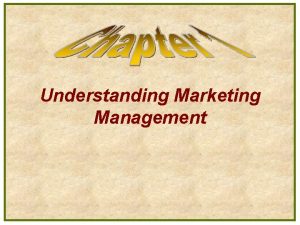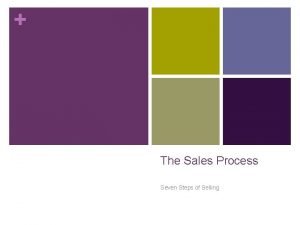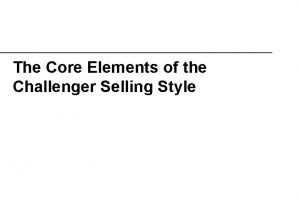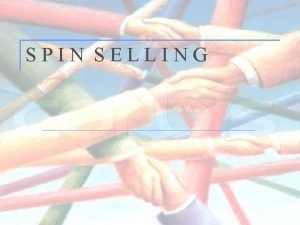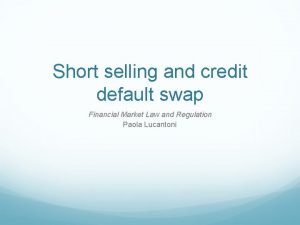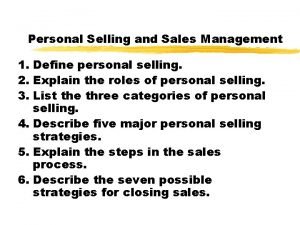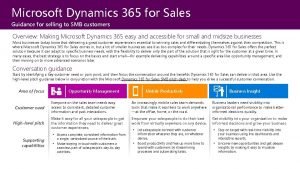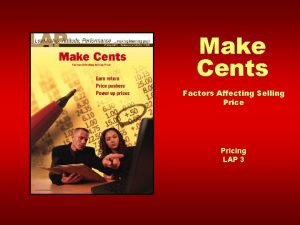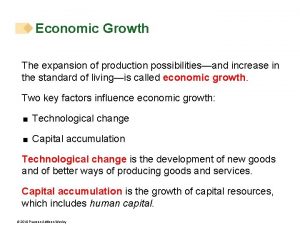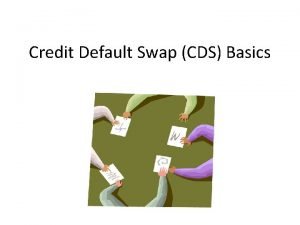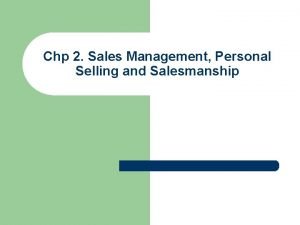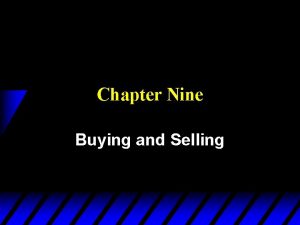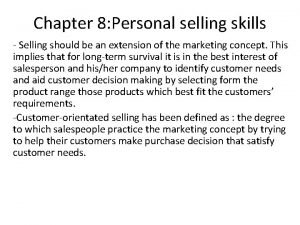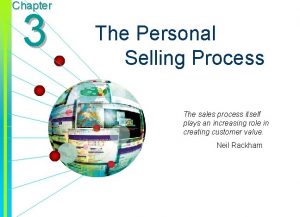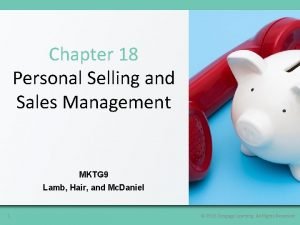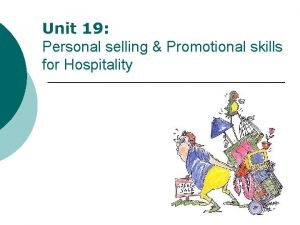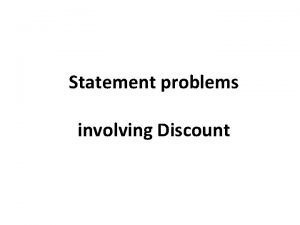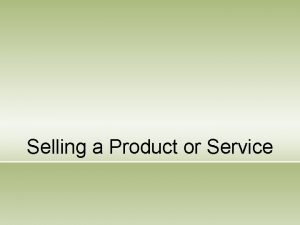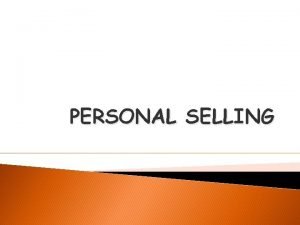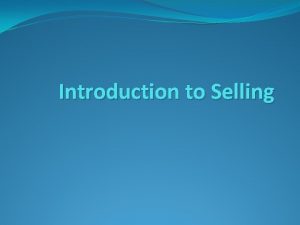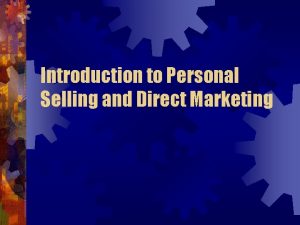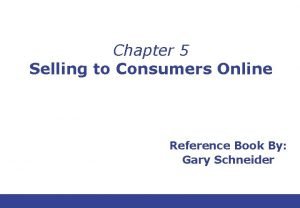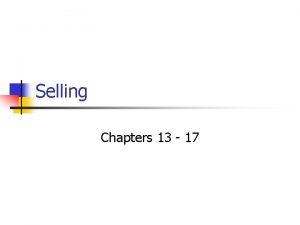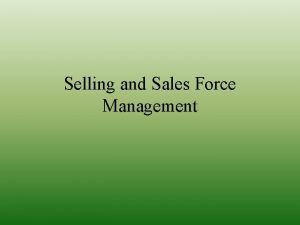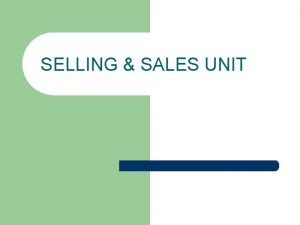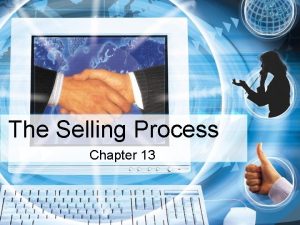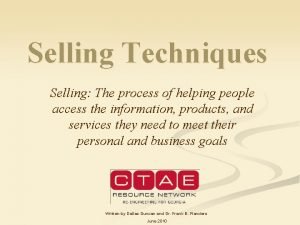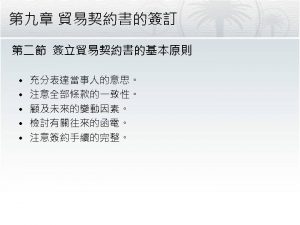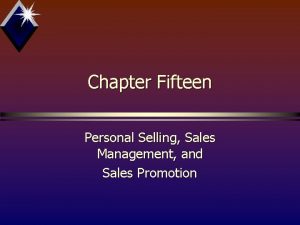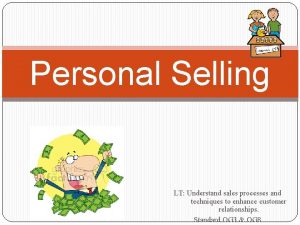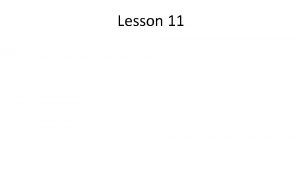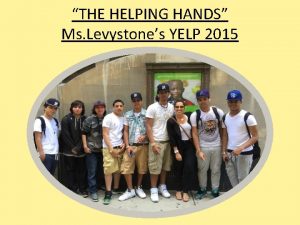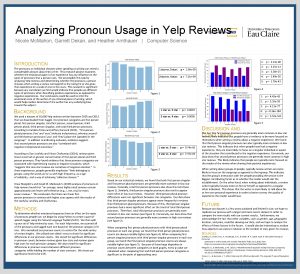Sales Selling and Sales Techniques DO NOW Yelp








































































- Slides: 72

Sales Selling and Sales Techniques

DO NOW: Yelp – Entry Level Sales HIGHLIGHT the personality characteristics that you think are most important to being a successful sales person

Directions: Work with a partner and define each of the following in sales terms. Give examples if possible. 1. Personal Selling 2. Telemarketing 3. Retail Selling 4. Prospect 5. Consultative selling 6. Feature – Benefit Selling 7. Greeting approach 8. Trading up 9. Paraphrasing 10. Empathy

Definitions 1. Personal selling – any form of direct contact between a salesperson and a customer. 1. The key factor that sets it apart from other forms of promotion is the two-way communication between the seller and the buyer. 2. This communication can take place in the following settings: 1. Retail setting 2. Business-to-business setting 3. Telemarketing 2. Telemarketing - Process of telling over the phone. 3. Retail Selling – The customer comes to the store to make a purchase.

Definitions Cont’d 5. Consultative selling- providing solutions to customers’ problems by finding products that meet their needs. 6. Feature – Benefit Selling - matching a characteristic of a product to a customer’s needs and wants. A salesperson needs to learn how a product’s feature will benefit the customer. Product features may be basic, physical, or extended attributes. 1. (basic=intended use 2. physical=differentiation from competing brands 3. extended attributes=provides price differentiation between models) 1. Customer benefits are the advantages or personal satisfaction a customer will get from a good or service. 7. Greeting approach- A type of sales approach; consists of a friendly welcome to your store or department

8. Trading up- technique of showing products of better quality or with more features than the customer requested 9. in Paraphrasing- restating what someone said different words; one of the sales techniques to determine customer needs 10. Empathy- awareness of another’s feelings and the ability to understand those feelings

Think About It Q. Why they highlighted specific characteristics? Q. What makes a good sales person? Q. Do you think you would be qualified for this position- why or why not?

Do Now: How do sales people gain new customers/prospects? What personality traits make for a good salesperson?

Guided Activity Write a story that includes each of the terms from the list according to the definition you created with your partner. Personal Selling Feature – Benefit Selling Telemarketing Greeting approach Retail Selling Trading up Prospect Paraphrasing Consultative selling Empathy

Do Now What personality traits make for a good salesman? What personality types are not well suited for a profession in selling?

The top three skills salespeople have: Communication Human relations Technical knowledge

Communication Listening carefully Speaking clearly Expressing yourself well

HUMAN RELATIONS Knowing how to relate to different types of people How to be tactful How to ask good questions

Technical Knowledge Product knowledge Selling techniques Computer skills

Prospecting Endless chain method- when salespeople ask previous customers for names of potential customers Commercial Lists Customer Referrals Cold Canvassing – selected at random. (door to door)

Sales Process- a series of steps that a salesperson goes through to help the customer make a satisfying buying decision. 1. Approaching the customer – ( preapproach, determine needs) 2. Determining needs – learning what the customer is looking for in order to decide what products/features to show. 3. Presenting the product – educating the customer about the product’s features and benefits.

Sales Process Cont’d 4. Overcoming objections – learning why the customer is reluctant to buy, providing information to remove the uncertainty, and helping the customer to make a satisfying buying decision 5. Closing the sale – getting the customer’s positive agreement to buy 6. Suggestion Selling – suggesting additional merchandise or services that will; save your customer money or help your customer enjoy the original purchase 7. Relationship building – creating a means of maintaining contact with the customer after the sale is completed

Step 1: Approaching the Customer Three purposes: 1. To begin conversation – be alert to customers’ interest 2. Establish a relationship with the customer – treat as individual with no stereo-typing, be perceptive about customers’ buying style, make them feel important. 3. Focus on the product

The Approach in B 2 B Selling Different than retail selling: Set up Appointment Arrive early with professionalism Firm had shake and smile Use customer’s name Have business card Industry comments Personal recollections? If not use small talk

The Approach in Retail Selling There are three methods that are used in the initial approach to retail customers. 1. Service Approach – The sales person asks the customer if he or she needs assistance. “How may I help you? ” This type of open ended question offers the customer a greater opportunity to respond with more then “yes” or “no”.

The Approach in Retail Selling 2. Greeting Approach – Simply welcome the customer to the store. This lets the customer know that you are available for any questions or assistance. The greeting can be as simple as “Good morning. ”

The Approach in Retail Selling 3. Merchandise Approach – The salesperson makes a comment or asks questions about a product in which the customer shows interest. If a customer stops and looks at a product you may open with a statement about the product’s features and benefits. Usually the most effective approach because it immediately focuses attention on the product.

Do Now: What are three different types of customers (think of situational influences from the previous unit).

Step 2: When to Determine Needs The salesperson should focus on the customers’ needs as early as possible. This is what happens when a salesperson does not determine needs early on: Salesperson: “This is one of our most popular tennis rackets. It’s perfect for you –the grip is the correct size and the large sweet spot can improve your game. ” Customer: “That’s very interesting; but, I am not buying the racket for myself. It’s actually a gift for my nine-year -old daughter. ” Q: What could have the salesperson said instead?

How to Determine Needs There are three methods used to determine customer needs: Observing Listening Questioning

Observing Look for buying motives that are communicated nonverbally. Facial expressions, hand motions, eye movement In a retail sale, how long a customer looks at a product gives you an idea of the buyers interest Q. How can you observe customer needs in a B 2 B setting?

Listening Helps you pick up clues to the customer’s needs You can use this information for the product presentation Customer: “I want a copier for my home business that is simple to use and is reliable. My last copier broke down often, which was a problem. I usually make one or two copies at a time. However, occasionally I may make up to 50 copies at once. ” Q: From this statement what can be determined? Q. What sales strategy could be used?

Questioning and Engaging the Customer First ask general questions about the intended use of the product and any previous experience with it Build your questions around words like who, what, when, where, why, and how. Use open ended questions – get more than a yes or no! Don’t ask questions that might embarrass the customer like – How much would you like to spend? ” Instead ask about the intended use of the product. This will give you clues on how much the customer expects to pay.

Questioning and Engaging the Customer You might ask someone who wants to purchase a copier Who will be using the copier? What type of copier is the person currently using? How much experience has the person had with copiers? How many copies will the person be making every week or month?

Video: The Office- Episode “The Client”- Season 2 How did the salesmen address customer needs? How did they utilize the first two steps of the sales process? Approach Customer Determine Needs

Do Now: Think about it Without looking at your notes - what are the first two steps of the sales process?

Step 3 - Presenting the Product The product presentation step of the sales process is where you get to share your product knowledge with customers. To be effective, you first need to determine customer’s needs in order to match those needs with product features and benefits. There a few techniques that will create an exciting and interesting sales presentation.

Think About it Q. Selling is, in many ways like putting together a jigsaw puzzle. Why?

Show and Tell Technique in the sales process where you can share your expertise. Who can give an example of a Show and Tell sales technique? Some things to consider…

Things to Consider Which Products Do You Show? Learn the intended use Select samples to match needs What Price Range Should You Offer? If range not known start with medium-priced product Can move up or down once you get customer’s feedback Not a good idea to introduce price early in presentation

How Many Products Should You Show? No more than three products at a time (do not overwhelm) Difficult to remember all features in more than 3 items When a customer wants to see more put away one’s that he/she have no interest

What Do You Say? Talk about the product’s features and benefits Match features with buying motives and needs Use highly descriptive adjectives and action verbs Avoid unclear words such as nice, pretty, and fine! Avoid using slang When selling B 2 B use appropriate industry jargon When selling retail use layman’s terms Layman’s terms are words the average customer can understand

Make the Presentation Come Alive Displaying and Handling a Product – diamond ring vs. a vacuum cleaner Demonstrating the Product – helps build customer confidence Using Sales Aids – Samples, magazine articles, audiovisual aids, graphs, charts, customer testimonials

Involving the Customer Best way to get the customer physically involved in presentation Ex. Swing golf clubs, walk in shoes, test-drive a car, try on a jacket Involve customer verbally by confirming selling points Ex. “This jacket is wind and water resistant. Don’t you think this feature would come in handy in an outdoor trip? ”

Holding the Customer’s Attention The customer is generally more attentive when he/she is involved, and not just listening If losing customer’s attention you can say, ” Now that you have seen the features of this product, what do you think about it? ”

Presenting the Productfinal thoughts When you cannot determine an intended price range what price level should you show? Why? What are layman’s terms and why should a salesperson use them? For security purposes and to make your sales presentation effective, what would you do if a customer asked to see six pairs of expensive earrings?

Do Now What are some objections a sales person might have to overcome?

Step 4: Objections – are concerns, hesitations, doubts, or other honest reasons a customer has for not making a purchase. Ex. “These shoes don’t fit me properly” Q. Should salespeople view objections as positive? Why?

Excuses Reasons for not buying or not seeing a salesperson. Customers often use excuses when they are not in the mood to buy or when concealing other objections. Ex. “I don’t like the styles you have available. ”

Common Objections Need – “I really want to get these sandals, but I don’t need another pair. ” Product – “I don’t’ buy 100% cotton shirts because you have to iron them. ” Source – “The last time I placed an order with you I received two weeks after the promised date. ” Price – “That’s more than I wanted to spend. ” Time - “I think I will wait until July when you have your summer sale to buy those sandals. ”

Four-Step Process for Handling Objections 1. Listen carefully – be attentive 2. Acknowledge the Objections – “I can see your point. ” 3. Restate the Objection – “I can understand your concerns. You feel that this model car is not fuel efficient enough. Am I correct? ” o *Need to _______or restate in a different way 4. Answer the Objections – Never answer with the air of superiority or that the person’s concern is unimportant.

Specialized Methods of Handling Objections 1. Substitution Method. Ex: 2. Boomerang Method Ex: 3. Question Method Ex:

4. Superior-point Method Ex: 5. Denial Method Ex: 6. Demonstration Method Ex: 7. Third Party Method. Ex:

Guided Activity Work with a partner to complete the Specialized Methods of Handling Objections Activity Create a scenario/role play in which the salesperson must overcome a customer’s objection based on the given method.

Step 5 - Closing the Sale Do Now: What does it mean to “close a sale? ”

Step 5 - Closing the Sale At a certain point in the sales process, your customer will be ready to make a purchase. Sometimes, the decision to buy is quick and easy. At other times, it is more difficult. Closing a sale – is obtaining an agreement to buy from the customer. All of the prior steps discussed involve helping the customer make buying decisions. To close a sale effectively, salespeople need to recognize when a customers ready to buy. There are certain rules and methods that used to determine this.

Timing the Close Buying signals – the things customers do or say to indicate a readiness to buy. Q. What are some examples of buying signals? Trial close – the initial effort to close a sale. This can be attempted to check customer readiness.

General Rules for Closing the Sale Recognize Closing Opportunities – moving major obstacles, effective product presentation Help Customers Make a Decision – do not show additional merchandise, remove unwanted items, summarize features/benefits Create an Ownership Mentality – use words that indicate ownership such as you and yours. Do Not Talk Too Much and Do Not Rush – if you think the customer is ready to buy stop talking about the product. Be patient, courteous, polite and helpful.

Specialized Methods for Closing a Sale Which Close – encourages a customer to make a decision between two items. Standing-room-only-close – used when a product is in short supply or when the price will be going up in the near future. (Perceived as a high pressure tactic, situation calls for honesty. ) i. e. real estate/ Limited Edition Direct Close – a method where you ask for the sale. This method is used when buying signal are very strong. Ex. “It appears you like I have shown you every option we offer. Now we just need to discuss the quantity you will need. ” In retail you might say “How would you like to pay for this purchase? ”

Specialized Methods for Closing a Sale Service Close – a closing method that explains services that overcome obstacles or problems Ask: can you think of different types of service that can be offered? Answer: gift wrapping, return policy, special sales arrangements, warranties. B 2 B= samples, terms of the sale, 30 60 90 days after invoice Retail=credit, checks, layaway plans

Failure to Close the Sale Not every presentation closes a sale! Even the best salespeople sell to a fraction of people they call on. Retail=invite the customer back to shop again B 2 B=ask if you can call again Don’t forget to: Get Feedback Maintain a Positive Attitude

Closing the sale Q. What are the four methods of closing the sale? Give examples 1. 2. 3. 4. What should you do when a failure to close takes place?

Step 5 in the Sales Process: Closing the Sale Aim: What does it mean to “close a sale? ” Do Now: Read the review from Forever Flawless Why was the sale unsuccessful? Will Mallory ever return to the store? How could the sales person handled this more effectively https: //www. yelp. com/biz/forever-flawless-natick

General Rules for Closing the Sale Help Customers Make a Decision Create an Ownership Mentality Do Not Talk Too Much and Do Not Rush Specialized Methods for Closing a Sale Which Close Standing-room-only-close Direct Close Service Close Failure to Close the Sale Retail=invite the customer back to shop again B 2 B=ask if you can call again Get Feedback Maintain a Positive Attitude

DO NOW Name a good worth over $50. How can it be made better?

Step 6 - Suggestive Selling The goal of selling is to help customers make satisfying buying decisions so that they buy from you again. You must create a relationship with your customer so that they will continue to do business with you in the future.

Suggestion Selling additional goods or services to the customer. It involves selling customers other items that will ultimately save time and money or make the original purchase more enjoyable.

Benefits of Suggestion Selling The customer will want to do business with you again Sales will increase Will be viewed as an effective salesperson Customer is more pleased with original purchase

Rules for Suggestive Selling 1. Use suggestive selling after the customer has made a commitment to buy but before payment is made or the order is written. 1. Make your recommendation from the customer’s point of view and give at least one reason for your suggestion. 1. Ex. “For your child to enjoy this toy immediately you’ll need two AAA batteries. ”

Rules for Suggestive Selling 3. Make the suggestion definite. Instead of saying “Will that be all? ” • say “This oil is recommended by the manufacturer for this engine. ” 4. Show the item you are suggesting. • Ex. “This purse matches your shoes perfectly, doesn’t it? ” 5. Make the suggestion positive. • Ex. You could say, “Let me show you the matching top to that skirt. It will complete the outfit beautifully. ”

Suggestive Selling Methods Offering related merchandise (aka cross-selling) Recommend larger quantities (aka up selling) Calling attention to special sales opportunities

Do Now Without looking at your notes, write down the first 6 steps of the sales process. You can work together!

1. 2. 3. 4. 5. 6. 7.

Step 7 - Relationship Building Creates a means of maintaining contact with the customer after the sale is completed

Maintaining and Building a Clientele (After Sale)Review All of the following activities need to be handled in such a way that it generates repeat business. Order processing – in retail selling, bag the merchandise quickly but with care. In B 2 B sales, complete paperwork leave business card. Departure – Reassure the customer’s wise choice, thank them , and invite them back Order fulfillment – the process of the customer paying for merchandise. (more involved for ecommerce)

Maintaining and Building a Clientele (After Sale)Review Follow-Up – check on customers satisfaction (ex. Delivery promises) Customer Service – problem handling Keeping a file Evaluate your Sales Efforts

Guided Activity Suggestion Selling and Customer Relations Management
 Personal selling examples
Personal selling examples Types of selling situations in personal selling
Types of selling situations in personal selling Saint seiya
Saint seiya Selling and sales management
Selling and sales management Conceptual selling techniques
Conceptual selling techniques Buyer seller dyad
Buyer seller dyad Yelp case study analysis
Yelp case study analysis Yelp vision statement
Yelp vision statement Yelp ambience categories
Yelp ambience categories Personal selling process in sales management
Personal selling process in sales management Solution sales process steps
Solution sales process steps Now i see it now you don't
Now i see it now you don't Now write a slogan using bandwagon techniques.
Now write a slogan using bandwagon techniques. Sales organization structure
Sales organization structure Difference between sales letter and sales promotion letter
Difference between sales letter and sales promotion letter Incremental method of sales force example
Incremental method of sales force example Sales quotas and sales territories
Sales quotas and sales territories Fonctions techniques
Fonctions techniques Sales questioning techniques
Sales questioning techniques Verbal buying signals
Verbal buying signals Inside sales tips techniques
Inside sales tips techniques Direct sales techniques
Direct sales techniques Trade sales promotion
Trade sales promotion Sales force composite
Sales force composite Contoh anggaran biaya administrasi
Contoh anggaran biaya administrasi What is buying and selling of securities
What is buying and selling of securities Marketing concepts
Marketing concepts Write inequalities to describe the region 3
Write inequalities to describe the region 3 Selling and marketing concept
Selling and marketing concept Ecommerce buying and selling
Ecommerce buying and selling Selling and marketing concept
Selling and marketing concept What is buying and selling of securities
What is buying and selling of securities Personal selling and public relations
Personal selling and public relations Personal selling vs direct marketing
Personal selling vs direct marketing Presentation and demonstration in selling process
Presentation and demonstration in selling process Personal selling advantages
Personal selling advantages Importance of marketing concept
Importance of marketing concept Unit 6 buying and selling
Unit 6 buying and selling Innisfree
Innisfree Value selling process
Value selling process How to get the selling price
How to get the selling price Define marketing management
Define marketing management Seven step selling
Seven step selling The challenger sale chapter summary
The challenger sale chapter summary Spin selling questions
Spin selling questions Short position meaning
Short position meaning Iiot integrators
Iiot integrators Define personal selling
Define personal selling Selling dynamics 365
Selling dynamics 365 Differentiate markup and markdown
Differentiate markup and markdown The selling concept is typically practiced with
The selling concept is typically practiced with Selling function of marketing
Selling function of marketing How to get the selling price
How to get the selling price Lean selling definition
Lean selling definition Who has the absolute advantage in selling salads?
Who has the absolute advantage in selling salads? Direct marketing vs personal selling
Direct marketing vs personal selling Selling credit default swaps
Selling credit default swaps Credit default swap
Credit default swap Behavioral equation theory of selling
Behavioral equation theory of selling Selling endowments
Selling endowments Personal selling skills
Personal selling skills Steps in the selling process
Steps in the selling process Differences between advertising and sales promotion
Differences between advertising and sales promotion Gespreksstructuur
Gespreksstructuur Marked price-selling price=
Marked price-selling price= Introduction for selling a product
Introduction for selling a product The 6 ps of planning
The 6 ps of planning Bentuk personal selling
Bentuk personal selling Pengertian marketing concept
Pengertian marketing concept Introduction to selling
Introduction to selling Introduction of personal selling
Introduction of personal selling Magazine strapline
Magazine strapline Reference selling
Reference selling
